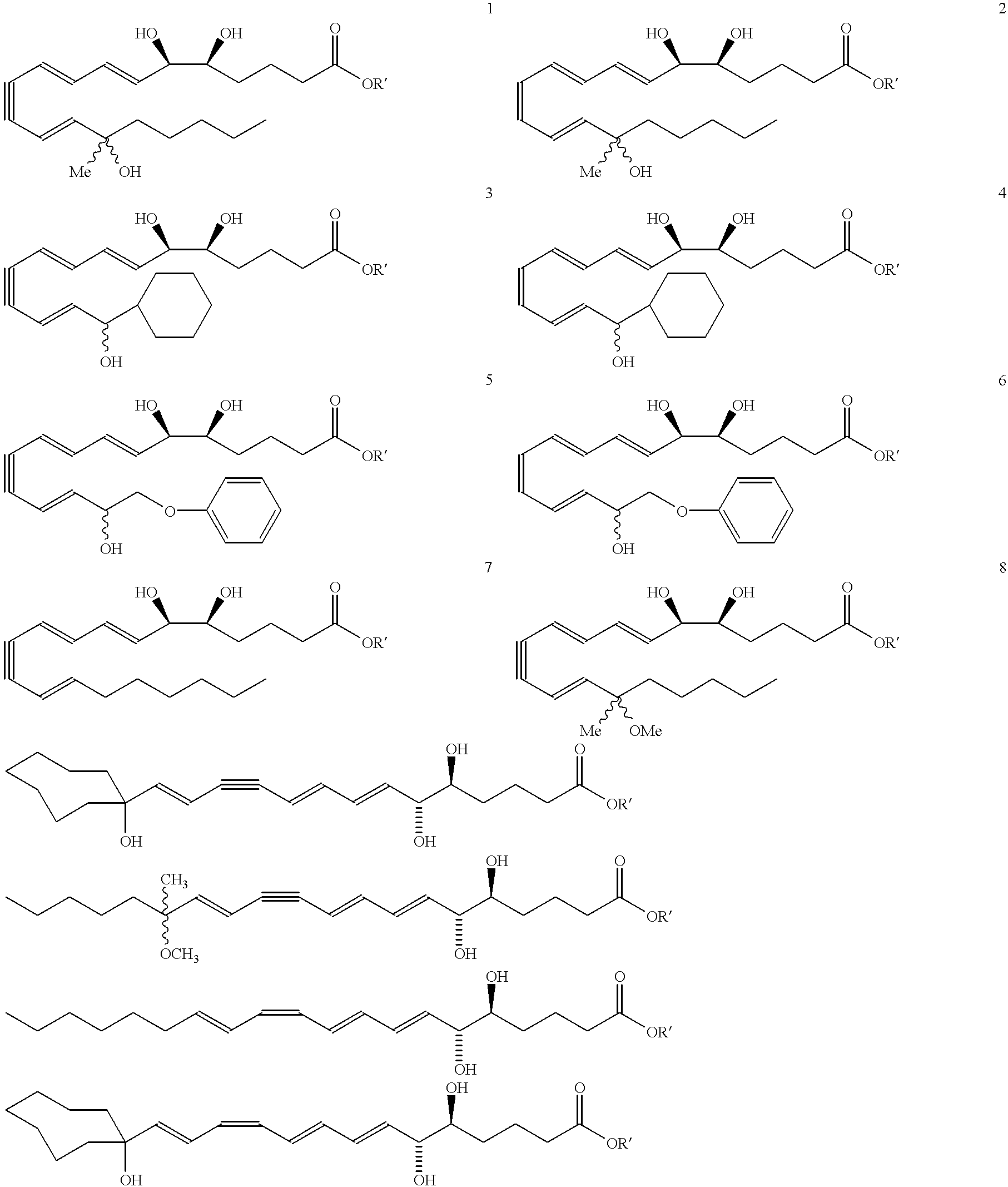Modulation of inflammation related to columnar epithelia
a columnar epithelia and module technology, applied in the direction of peptide/protein ingredients, viral/cell line based processes, peptide sources, etc., to achieve the effect of stimulating the activation of the inflammatory cell and attenuating one or more deleterious perturbations
- Summary
- Abstract
- Description
- Claims
- Application Information
AI Technical Summary
Benefits of technology
Problems solved by technology
Method used
Image
Examples
example 1
Lipoxin A.sub.4 Modulates Migration of Human PMNs Across Intestinal
Epithelial Monolayers.
Lipoxins Synthetic LXA.sub.4, LXB.sub.4, and 11-trans-LXA.sub.4 were obtained from Cascade Biochem Ltd. (Berkshire, United Kingdom). Concentrations were determined from extinction coefficients as described in Sheppard K-A., et al. (1992). Biochimica et Biophysica Acta 1133: 223-234. All eicosanoid stock solutions were stored at -70.degree. C. in methanol (American Scientific Products). Eicosanoids were diluted in modified HBSS to a concentration of 1 .mu.M prior to all experiments. PMN or T84 monolayers were exposed to lipoxins at indicated concentrations and allowed to incubate at 37.degree. C. for the indicated period of time. Vehicle controls consisted of dilutions of the solvent (ethanol) equivalent to the highest concentration of lipoxin used in any given experiment (0.01%).
Cell culture Approximately 350 epithelial monolayers were used for these studies. T84 intestinal epithelial cells (pas...
example 2
Measurement of Electrical Parameters of Cultured Epithelial Monolayers: Use in Assessing Neutrophil-Epithelial Interactions
MATERIALS AND METHODS
General information regarding T84 cells: T84 cells were negative for mycoplasma as tested commercially using a nucleic acid probe (Organon TeKnika Corp., Rockville, Md.). T84 cells were first obtained from Dharmsathaphorn in 1984 (Dharmsathaphorn, K. Am. J. Physiol. 246 (Gastrointest. Liver Physiol. 9):G204-G208; 1984). T84 cells were originally isolated from a lung metastasis of a patient with colonic carcinoma and were established as a transplantable line in BALB / c nude mice (Dharmsathaphorn, K. Am. J. Physiol. 246 (Gastrointest. Liver Physiol. 9):G204-G208; 1984). However, T84 cells are now available from the ATCC (American Type Culture Collection, Rockville Md., cat #CCL 248). ATCC derived T84 cells passages 60-100 have been compared with the original distributed parent line (passages 16-40) by assaying electrogenic Cl.sup.- secretory re...
example 3
Synthesis of Lipoxin Analog Compounds ##STR3##
Preparation of the Methyl Ester Precursor of Compound 1
To a solution of 3-methyl-3-trimethylsiloxy-1-bromo-1-octene (130 mg. 0.44 mmol) in benzene (1.5 mL) was added n-propylamine (0.05 mL, 0.61 mmol) and Pd(PPh.sub.3).sub.4 (20 mg. 0.02 mmol) and the solution was protected from light. It was then degassed by the freeze-thaw method and stirred at rt for 45 min. (7E, 9E, 5S, 6R) Methyl 5,6-di(tert-butyldimethylsiloxy)-dodeca-7,9-diene-11-ynoate (183 mg. 0.44 mmol) (compound 12) and copper iodide (14 mg. 0.07 mmol) were added and the solution was one more time degassed by the freeze-thaw method. The mixture was stirred for 3 h at rt and quenched with saturated aqueous solution of NH.sub.4 Cl and extracted with ether. It was then washed with brine and dried over MgSO.sub.4 and the solvent was evaporated. Flash column chromatography (silica, 3% ether hexanes) afforded pure compound as a colorless liquid (171 mg. 57% yield).
To a solution of t...
PUM
| Property | Measurement | Unit |
|---|---|---|
| pH | aaaaa | aaaaa |
| pH | aaaaa | aaaaa |
| diameter | aaaaa | aaaaa |
Abstract
Description
Claims
Application Information
 Login to View More
Login to View More - R&D
- Intellectual Property
- Life Sciences
- Materials
- Tech Scout
- Unparalleled Data Quality
- Higher Quality Content
- 60% Fewer Hallucinations
Browse by: Latest US Patents, China's latest patents, Technical Efficacy Thesaurus, Application Domain, Technology Topic, Popular Technical Reports.
© 2025 PatSnap. All rights reserved.Legal|Privacy policy|Modern Slavery Act Transparency Statement|Sitemap|About US| Contact US: help@patsnap.com



